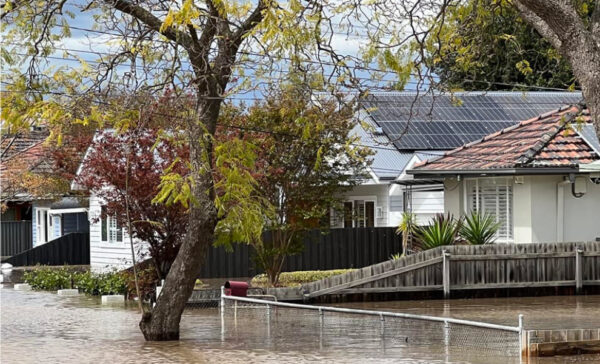By Sian Watkins
The October 2022 Maribyrnong flood created great hardship and distress which, for many people, has been compounded by long or ongoing delays in finalising insurance claims. On April 17, a federal parliamentary inquiry held public hearings at which Maribyrnong residents related their experiences with insurers. The homes of most are still uninhabitable.
About 500 properties in and around Maribyrnong were flooded on 14 October, 2022. Other parts of the state, NSW and Tasmania also flooded that week in what came to be defined as an “insurance catastrophe”. It was one of four catastrophic floods that year, with a record 303,407 insurance claims totalling almost $7.4 billion lodged.
The House of Representatives Economics Committee, chaired by the Federal MP for Fraser, Dr Daniel Mulino, is inquiring into insurers’ responses to these claims.
Allison Baumgart told the hearing that her experience with Allianz was an “ongoing nightmare”. Her house remains unliveable and “we are up to version 14 of the scope of works”. She has young children, and her husband has been diagnosed with heart failure. Both his parents died last year.
She said significant items had been missed on scopes of work; in others, items had been added but the total cost of works reduced. A floor expert said her floor needed to be replaced but this was not included in a new scope of works. At a meeting to discuss this, the insurer’s representative ignored her and spoke to the third person present. A floating floor would be installed on top of the existing floor, he said, “and if she doesn’t like it, she can lodge a complaint”.
She and her husband attended a meeting organised by the insurer, one she only agreed to if the insurer was serious about resolving her claim. When they met, the representatives said: “And what can we help you with?”

Another Maribyrnong resident, Angelika Prpa, is still living with her sister. Her two boys, who are neurodiverse, desperately want to go home. She said that after making her claim, CommInsure told her to expect a call within 20 business days. After 50 days, she called to find out what was going on.
She has received three scopes of work, for $154,000, then $110,000 and finally $176,000, which “isn’t enough to fix my home”. The insurer wants her to accept a cash settlement and rejected Angelika’s independent quote of $311,000.
Her house has been broken into twice; copper pipes were stolen and water spewed for four days, but her insurance does not cover damage after a claim is made. (A homeowner told an earlier hearing that his insurer would not provide building insurance to cover the house while it was unoccupied and awaiting repairs.)
Ms Prpa has sent multiple emails to her insurer with quotes to rebuild the fence; invoices for the storage costs; and asking “what to do about the mould” but had not received a response. “They don’t care. They’re waiting for me to … give up. You don’t sleep, you don’t eat properly … they’ll take my money every month, put my premium up, but you don’t get anything for your money.”
Laura Jo Mellan and Mayor Pierce Tyson, from Maribyrnong and Moonee Valley councils, said insurers should allow homeowners to incorporate resilience measures (such as raising floor heights and running electrical wiring higher up walls) when repairing/rebuilding. Ms Mellan added that state governments could offer rebates to owners who did flood resilience works, as they did for owners who installed solar power.
Jane Keddie, representing the Planning of Australia (Victoria division), said that property buyers and owners needed access to clear flood-risk information and that the State Government needed to identify flood-risk areas, as it had with bushfire risk, so that planning controls reflected the risk.
She said that flood risk needed to be identified in a consistent and more nuanced way and that local governments needed more clarity from the State Government on how they should respond to different levels of risk. She said floodway and inundation overlays in planning schemes were applied inconsistently and did not indicate the different levels of risk that often existed in the areas to which they applied.
The committee will report by the end of September: https://www.aph.gov.au/floodinsurance

